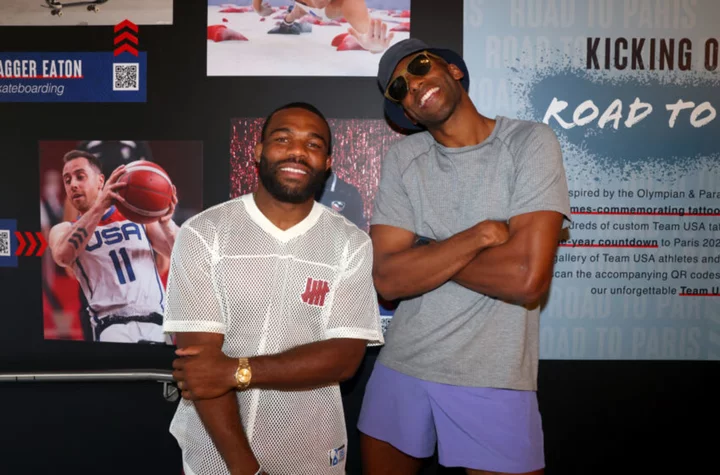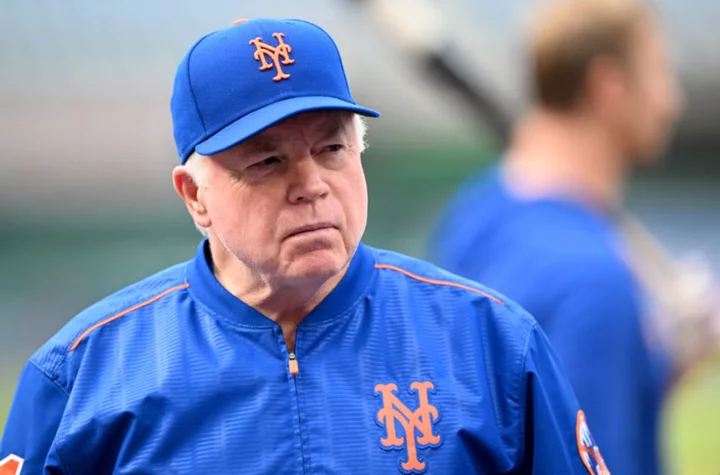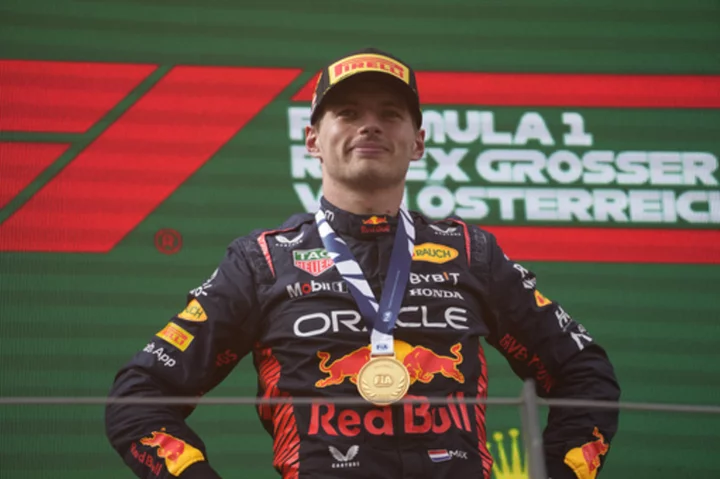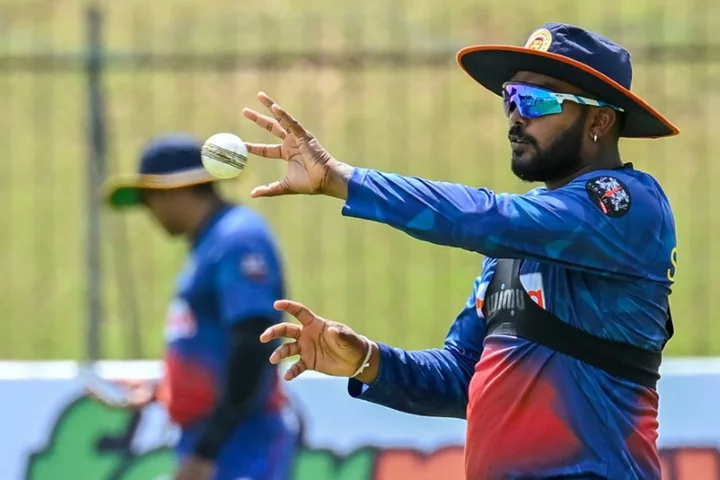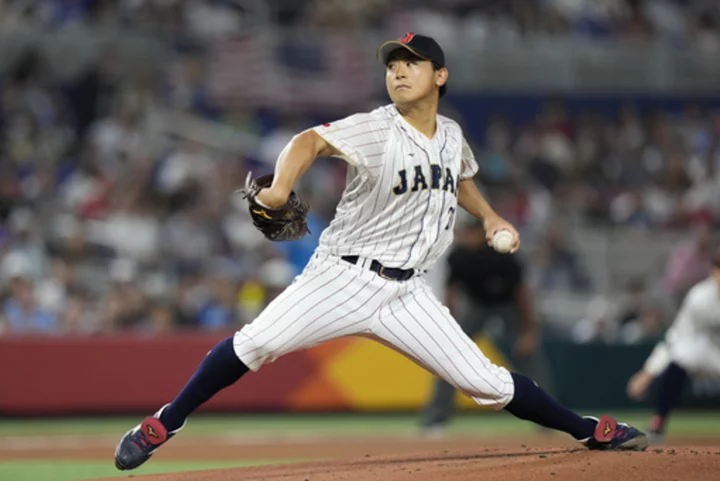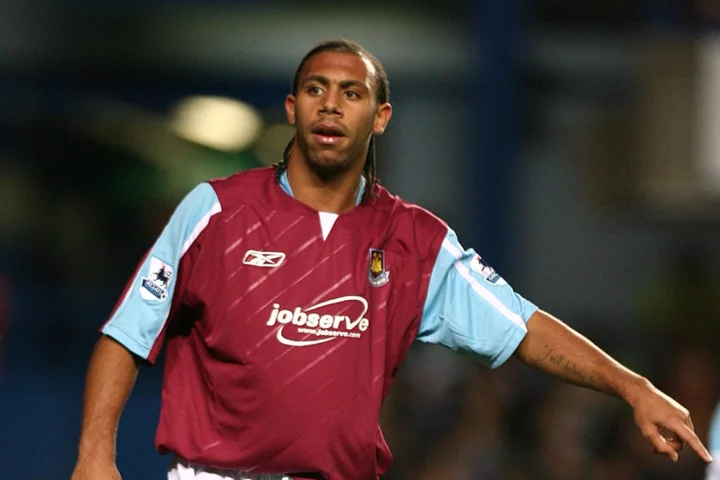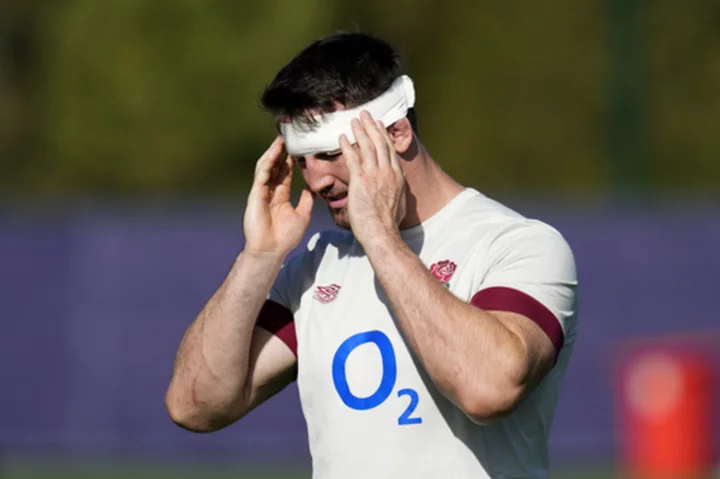"Are you gonna get it?"
Over the course of several hours spent at Team USA's 2024 Paris Olympic kickoff event at Ephemeral Tattoo in Williamsburg, BK on Wednesday night, this immediate test of my mettle was far and away the most commonly-used conversation starter.
Second Place: "Hey, nice shirt! Did you go to the MLB All-Star Game in Seattle?" I did not.
The purpose of the event was to celebrate our nation's patriotism and sporting mettle one summer ahead of the games, centered around a watch party for USWNT's soon-to-be-tense bout with The Netherlands. Sure. Sure, sure. But in practice, the clearest way to show pride and readiness for the Games was a semi-permanent tattoo, which were being applied (in many forms) in several rooms throughout the venue.
There was the torch. There was the diver. There was a sense of foreboding, even around the "ephemeral" nature of the ink mixture. As a fellow journalist read early on in the evening, the tattoos touted "30% visibility" after two years. Does that mean they'll be 70% dissolved, or that there's a 30% chance you still have a fully-fledged tattoo two years later (the stated time frame is "one-to-three years")?
I entered the doors to the shop fully intending not to find out. Of course, I was wrangled immediately and told that if I spoke to Gold Medal-winning wrestler Jordan Burroughs, he would swiftly change my mind. "He's really into it," his team said.
Team USA Paris 2024 Olympians convince me to get Ephemeral Tattoos
As I quickly learned, getting a tattoo of the Olympic rings is a rite of passage for most Olympic athletes — and, obviously, is frowned upon if you haven't given the same level of blood, sweat and tears (though I'm convinced the stress and squealing of getting a tattoo, Epehemeral or not, would qualify me). Burroughs got inked up before he competed in the London Games in 2012 in anticipation of his debut.
"I got the rings and the flag. After I got back from the Games, I got gold up and down my arm," Burroughs clarified. "It was a special time for me, and it's one I'll never regret. It symbolizes a time in my history when I did something really important."
So why should I join, in my small little way? Why should I feel worthy?
"Because it's a movement," Burroughs assured. "Everyone can identify with the Olympic games. It's more than just being a competitor. It's about being a representative of the United States of America."
"I'm not gonna let you go back to your wife with one if you promised her you wouldn't, though," he added slyly.
Burroughs' passion for the art was as palpable as I'd been told, but he acquiesced to my whims, rather than the other way around. But there was still plenty more time, and plenty more enthusiastic athletes I'd have to match up with, all dedicated to me keeping an open mind.
They'd taken the plunge. Several self-confident attendees had, too. Former Bachelor Matt James was in the chair for quite a while, and based on my observation, could've received anywhere from one to eight tattoos.
It was two-time wheelchair basketball Paralympic gold medalist Trevon Jenifer with whom I found a common spirit first. Jenifer, who engineered the breaking of a 28-year gold medal drought for Team USA in his sport of choice, was a self-described "wimp" (though certainly not in other aspects of his life).
"I'm currently on the fence," Jenifer said. "The missus … I sent her the list of tattoos they had here, and she couldn't make up her mind. If I go through the pain, I want it to be permanent like the one I have [already]."
I vowed to make it clear in my resulting summary that the task itself wasn't terrifying; I was just uniquely terrified.
"My wife would be the first one to say I'm the biggest crybaby in the world, and I would not combat that at all," Jenifer assured me. My only rebuttal would be that his wife has not yet met me.
Steele Johnson, Olympic silver medalist in the 10 m synchro dive in Rio (alongside his partner, David Boudia), was the first person I spoke to who'd already finished the procedure. Hoping he'd give me an out in describing the process as simpler, softer, and more paper-infused rather than needle-based, he instead assured me that this was pretty close to the genuine article.
"The only thing different is the ink that they're using," Johnson proudly stated. "It feels exactly the same because the process is the same."
"I'm a little baby when it comes to tattoos, even though I've got a ton of them," he noted conflictingly, showing off near-full sleeves as he humbly got down to my emotional level. "They all hurt me. But, you know, I love the experience of getting tattoed. I love what the artists are able to do, putting ink on the skin and the story it can tell."
Johnson, known for otherwordly precision in his chosen sport, no doubt appreciates the finer points of the artists' abilities, too. He received an OIympic torch on his ankle Wednesday night, in addition to the trademark rings, his first tattoo and the common bond that many of these athletes shared from their Games debut.
I thanked Johnson for his efforts, just as I'd thanked the affable Jenifer and the determined Burroughs before. I slinked past the side rooms one last time, each stuffed with a dentist's chair, an artisan, and a table of foreign implements (and, more often than not, Bachelor Matt James).
I will be rooting on Team USA with a full heart and full bellow in Paris in 2024. I found myself adequately prepared and excited to follow their storylines. My gear up for the Games had begun, as instructed.
But, like my unearned 2023 All-Star Game shirt, getting a tattoo felt a bit like stolen valor (or was that my excuse making in overdrive?). They'd earned the rings. They'd earned my respect. I'll be right here waiting for the next generation to come back and adorn a little gold to their sleeves after triumphing once more next summer.

